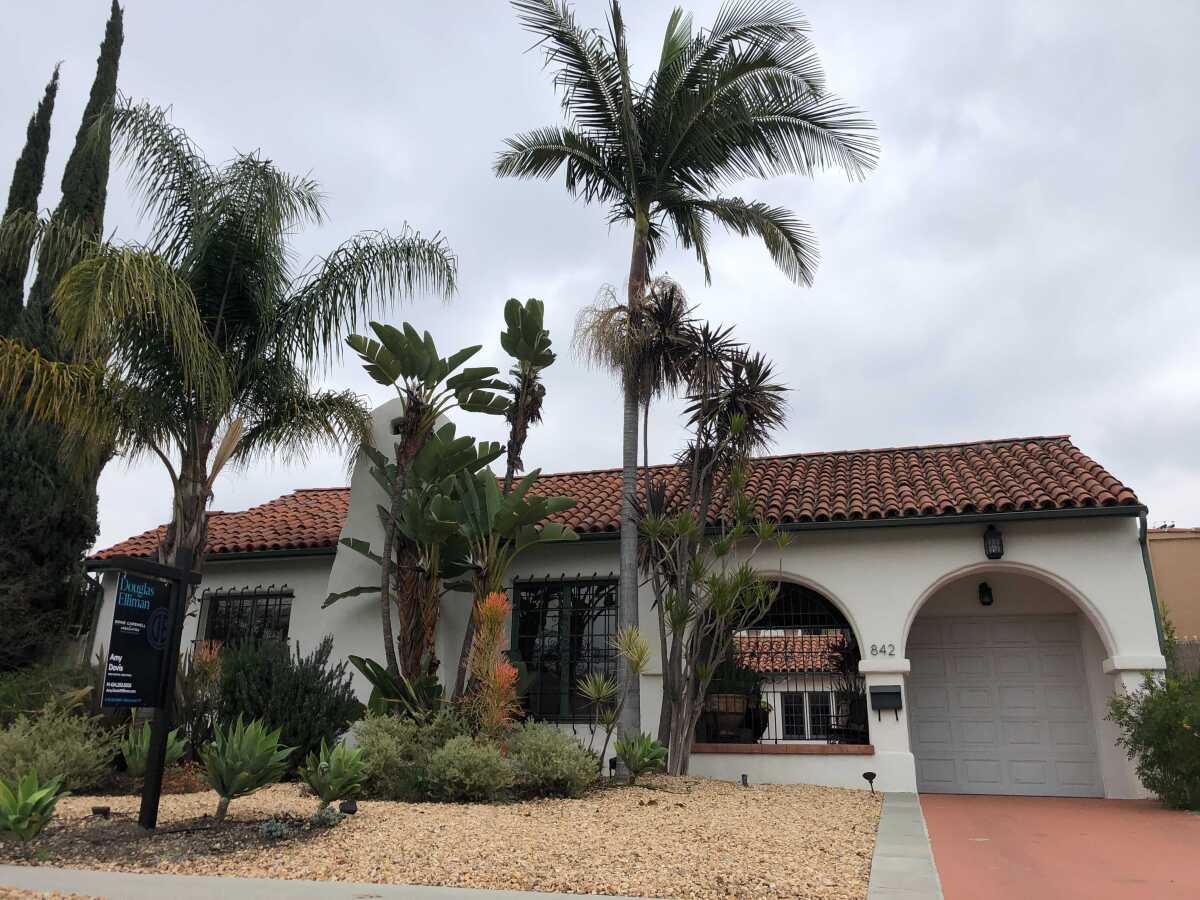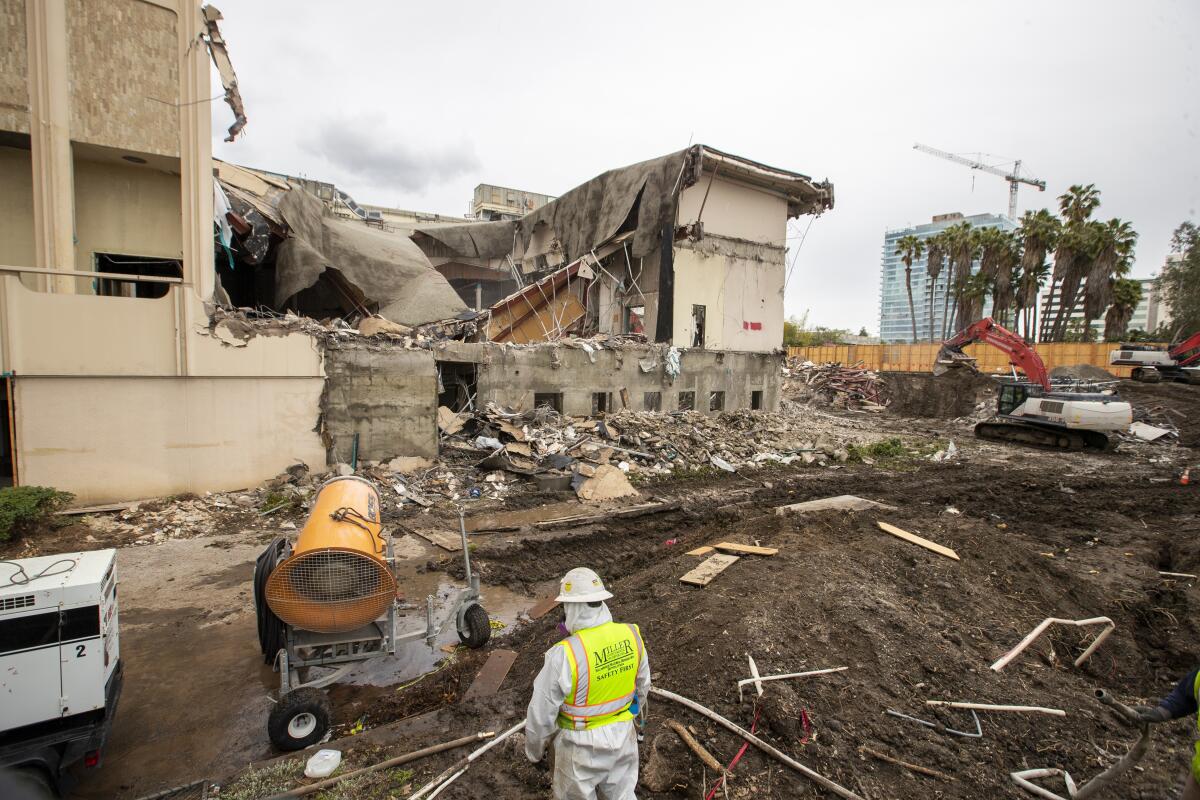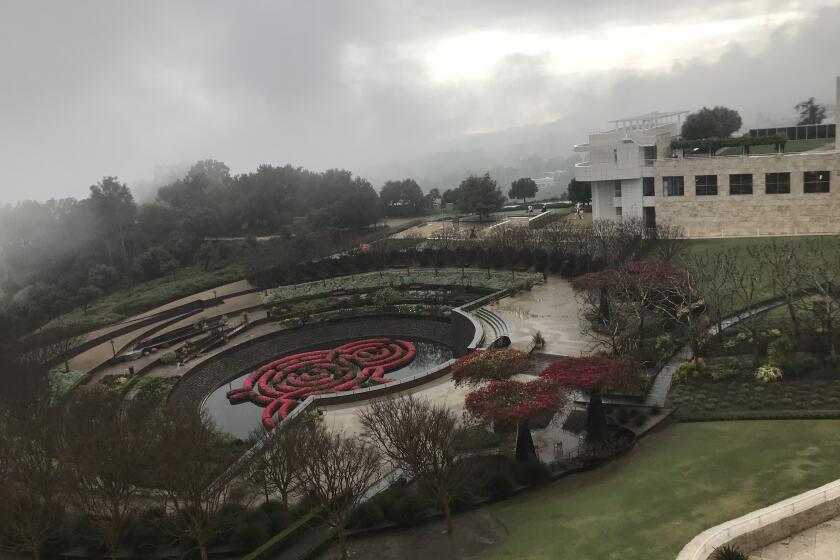Why is LACMA selling Michael Govan’s house less than a year after buying it?

- Share via
Los Angeles County Museum of Art Director Michael Govan is going to have to move out of his house once again.
A little more than nine months after acquiring a graceful Spanish Revival home in Mid-Wilshire to house its director, LACMA has put the house on the market for $2.4 million. The three-bedroom, three-bath home, which sits on more than 7,800 square feet of land, was acquired last May for $2.2 million. It had been intended as a downsized home from the previous LACMA residence Govan occupied, a $6.6-million Tudor-style house from 1926 in Hancock Park.
For the record:
5:59 p.m. Feb. 9, 2021An earlier version of this story listed the Mid-Wilshire lot as nearly 3,300 square feet. It is more than 7,800 square feet.
Govan, who received housing as a perk of employment, is now giving up that perk entirely.
“Due to the ongoing impact of the pandemic, the museum is selling the director’s residence to realize these proceeds,” said a spokeswoman for the museum in a statement. “The director will no longer live in housing owned by the museum.”
As LACMA nears completing demolition of its 1960s and ‘80s-era buildings, the museum finally releases a floor plan for architect Peter Zumthor’s museum rebuild.
The museum didn’t specify how the proceeds from the sale would be deployed, but pandemic closures are certain to have taken a toll on its finances.
Revenue from admissions, parking, food services, special exhibitions and rentals, among other line items, contribute more than 16% to LACMA’s bottom line, according to 990 tax forms filed in 2018, the latest year for which they are available. An audited financial statement posted to the museum’s website last year shows that admission revenue, which had stood at nearly $6 million in 2019, had declined by 50% by the end of the 2020 fiscal year in June — a figure that takes into account more than three months of pandemic closures. (A good deal of that decline, however, could also be attributed to the fact that much of the museum’s campus has been closed and under construction.)
But certainly there are gaps. Last year, LACMA took a $6.7-million loan from the federal Paycheck Protection Program — one of many L.A. institutions to use the loans to make up for devastating COVID-induced shortfalls. The museum has generally avoided the large-scale layoffs of other institutions, though in October it did lay off fewer than 10 employees working in on-site membership sales.
In addition, LACMA is contending with at least one hiccup in the construction process.

Late last month, arts writer Lee Rosenbaum reported that construction cranes erected to work on LACMA’s new Peter Zumthor-designed building had been disassembled shortly after being installed due to “shifting” ground near the tar pits site.
LACMA’s spokeswoman says it is “standard practice” to monitor tower cranes and their foundations prior to use, making adjustments as needed.
“Due to unique conditions presented by the tar pits at the site, the monitoring revealed that adjustments needed to be made to the crane bases,” she wrote. “As a result the cranes were disassembled while adjustments are being made to the bases and contingency plans for temporary mobile cranes are in place to accommodate this change without impact to the project.”
The new L.A. Arts Recovery Fund initiated by the J. Paul Getty Trust will support small and medium-sized arts nonprofits.
More to Read
The biggest entertainment stories
Get our big stories about Hollywood, film, television, music, arts, culture and more right in your inbox as soon as they publish.
You may occasionally receive promotional content from the Los Angeles Times.












